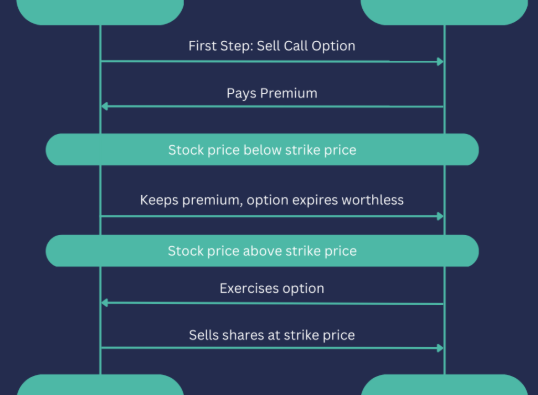
When building a strong investment strategy, one of the most debated topics among investors is the comparison between growth and value investing. Both approaches offer unique benefits and come with their own risks. Understanding the key differences, when to apply each, and how they’ve historically performed is essential for anyone serious about growing their wealth.
What Exactly is Value Investing?
Value investing is centered around identifying stocks that are priced lower than their actual worth. These companies may be temporarily overlooked by the market due to poor public sentiment, short-term challenges, or sector-specific downturns. However, they often have strong fundamentals, steady earnings, and pay regular dividends.
The value investor’s mindset is one of patience. The belief is that, over time, the market will recognize the company’s true potential, and the stock price will correct itself upward. While this approach can yield strong returns, it also requires a deep understanding of company valuations and the discipline to wait through market fluctuations.
Pros and Cons of Value Investing
Advantages:
- Typically carries less volatility than speculative investments.
- Focuses on companies with strong fundamentals.
- Often provides dividend income, which can be reinvested.
- Makes use of compounding over time.
- Encourages long-term thinking and minimizes emotional decision-making.
Disadvantages:
- Requires extensive research and financial knowledge.
- May take years before the stock reflects its true value.
- There’s always a chance the company may never recover or grow.
- Can result in concentrated bets if certain sectors underperform.
Understanding Growth Investing
Growth investing, by contrast, targets companies expected to expand faster than the market average. These firms reinvest profits back into operations to fuel expansion rather than paying dividends. They’re typically found in emerging industries or innovative sectors, and their stocks often carry higher price-to-earnings ratios.
This strategy appeals to those willing to accept short-term volatility for the chance at higher long-term gains. However, it comes with greater risks—especially if the company’s projected growth doesn’t materialize.
Pros and Cons of Growth Investing
Advantages:
- Offers potential for significant capital appreciation.
- Suitable for long-term investors aiming to build wealth over time.
- Allows incremental investment as financial capacity increases.
Disadvantages:
- Higher volatility and less stability.
- No dividends—returns depend entirely on stock price increases.
- Short-term underperformance is common.
Comparing Performance Over the Years
The debate between growth and value investing is supported by decades of performance data. Historically, both strategies have rotated in and out of favor depending on the economic environment:
- During the 1980s and early 2000s, value stocks outperformed growth stocks.
- The tech boom and recent dominance of tech companies have tilted performance in favor of growth since the late 2000s.
- Value stocks tend to shine during periods of rising interest rates and inflation.
Performance is cyclical. During stable, low-rate environments, growth stocks flourish. In contrast, uncertain or inflationary periods favor value investments.
Where They Differ: Key Contrasts
| Feature | Value Investing | Growth Investing |
|---|---|---|
| Focus | Undervalued companies with solid fundamentals | High-potential firms focused on future growth |
| Risk Level | Generally lower risk | Higher volatility and risk |
| Dividends | Typically pays dividends | Rarely pays dividends |
| Market Behavior | Buys low, holds long | Buys based on future potential |
| Investment Style | Conservative | Aggressive |
Can a Stock Be Both?
Absolutely. Many companies evolve over time. A firm undervalued today could become a market leader tomorrow. Similarly, a once high-flying growth stock may face challenges and be viewed as a value play later.
Smart investors understand that these categories aren’t rigid. The lines blur, and flexibility in strategy is crucial.
When to Focus on Growth Stocks
Growth investing is best suited for those with:
- A long investment horizon.
- A high tolerance for risk and volatility.
- Confidence in emerging technologies or sectors.
- No immediate need for income from their portfolio.
If you can afford to wait and stomach market ups and downs, growth stocks can offer substantial rewards over time.
When Value Stocks Are a Better Fit
Value investing makes sense if you:
- Prefer steady income from dividends.
- Want to minimize risk while still aiming for gains.
- Have limited time until retirement or need returns sooner.
- Favor stability over speculation.
This approach is ideal for investors who prioritize capital preservation and long-term reliability.
Which Approach Wins?
There’s no definitive winner. In recent years, growth stocks—particularly in the tech sector—have outpaced value stocks. Companies like Apple, Microsoft, and Amazon have seen explosive gains.
Yet, long-term research paints a different picture. Studies by noted economists such as Eugene Fama and Kenneth French show that, over many decades, value stocks have delivered higher cumulative returns. Although short-term dominance shifts, value has historically provided solid, consistent growth.
What About the Future?
While predicting market trends is impossible, indicators such as inflation and interest rate changes suggest a potential swing back toward value investing. Rising costs often pressure high-growth companies, while firms with strong fundamentals and cash flow tend to hold up better.
In 2025, sectors like energy and financials could benefit from these macroeconomic shifts, offering renewed opportunities for value investors.
How to Choose: Growth or Value?
Ultimately, the right choice depends on your personal goals, timeline, and tolerance for risk. Younger investors may lean toward growth to maximize long-term returns, while those closer to retirement may prefer the stability of value stocks.
However, blending both strategies can be a smart move. A well-diversified portfolio that includes value and growth stocks allows you to weather market changes and capture the strengths of both approaches.
Final Thoughts
The debate between value and growth investing isn’t about which is universally better—it’s about what’s right for you. Economic cycles, personal goals, and risk profiles all play a role in deciding your strategy.
Instead of choosing sides, consider adopting a balanced view. By understanding both strategies and using them wisely, you can build a resilient portfolio tailored to your financial future.









